Maunakea – The White Mountain
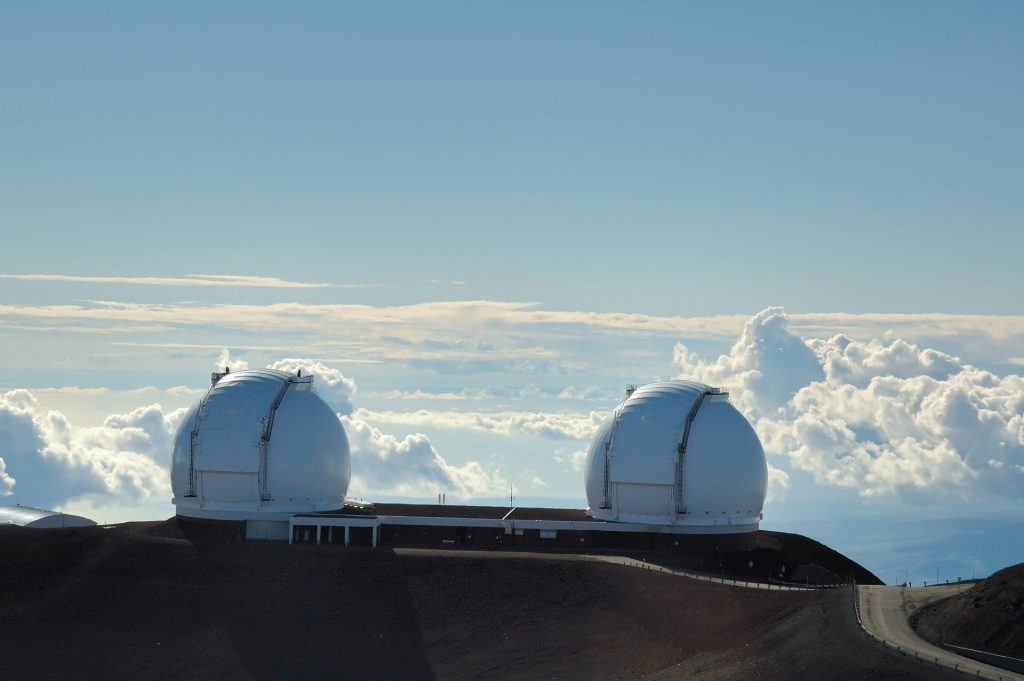
A sacred mountain for Hawaiians, it is also an Observation facility with telescopes bigger than the Hubble Space telescope.
In mid-October the Hawaiian islands once again opened their doors to visitors, admitting 30,000 visitors into the state on the first day alone. If that sounds like a big number, consider this: that number was only a third of the daily average flying into Hawaii during the peak season.
Stories from fellow travelers inform me that one reason people are flocking to Hawaii during the pandemic is to work from “home” (hotel room or condo) but in the tropical climate of the Hawaiian islands. I wish I could do that too!
Whether you are there for work or pleasure, the next time you are on the island of Hawaii, popularly known as Big Island, visit Maunakea. A dormant volcano that last erupted in 2460 BC, Maunakea stands tall at 13,796 feet above sea level. Most of the volcano is underwater, and if you include its base it would be the world’s tallest mountain at 33,464 feet.
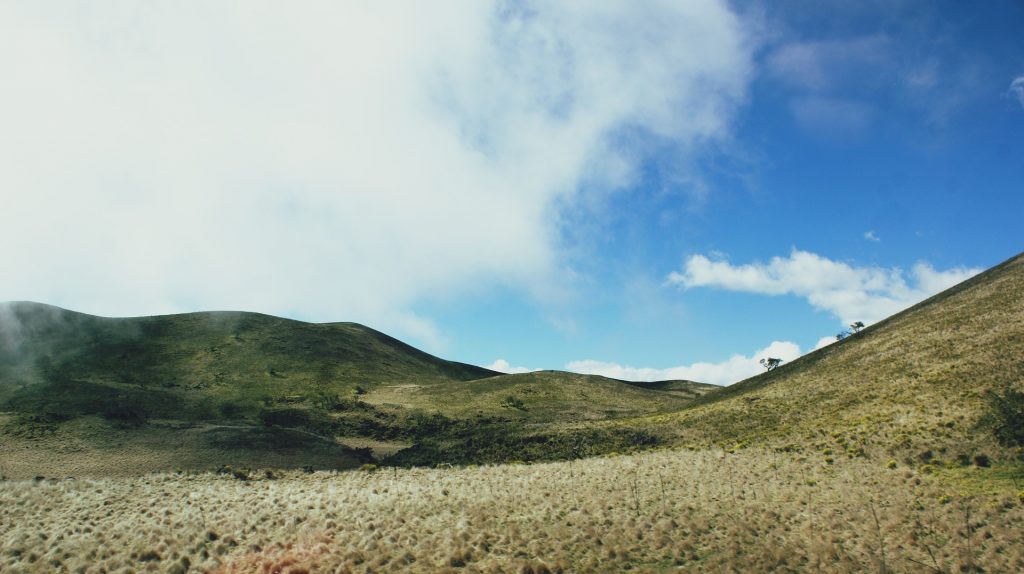
The mountain has one of the clearest atmospheres on Earth. The air is stable with very little turbulence. This makes it an astronomer’s delight. The Mauna Kea Observatory is world-famous and 11 nations have installed 13 telescopes on the summit. Some of these telescopes can look at objects 12 billion light-years away. That means a time even before our earth and sun came into existence. To make sure that there is very little interference for the telescopes, the lights on the highways of Big Island are specially designed to reflect less light.
Given these amazing statistics, I wanted to visit the summit. But visiting the summit requires some preparations, even before you arrive in Hawaii. I finally managed to go to the top of Maunakea on my third trip to the Big Island.
The temperature on Maunakea fluctuates between 45°F and 15°F year-round. Add to that the wind, and it can feel like 20°F, even on a warm day. You will need a thick winter parka capable of keeping you warm when the temperature is below 32°F, along with gloves, a hat, long pants, thick socks, a sweatshirt, and sturdy boots. And don’t forget sunglasses! (We went in the early afternoon. The sun shone brightly but it was bitterly cold.) Half of your suitcase will be occupied with these items, but they are necessary. You will also have to be prepared to tolerate a temperature change from 75°F to 80°F at the base before you start your journey up the mountain.
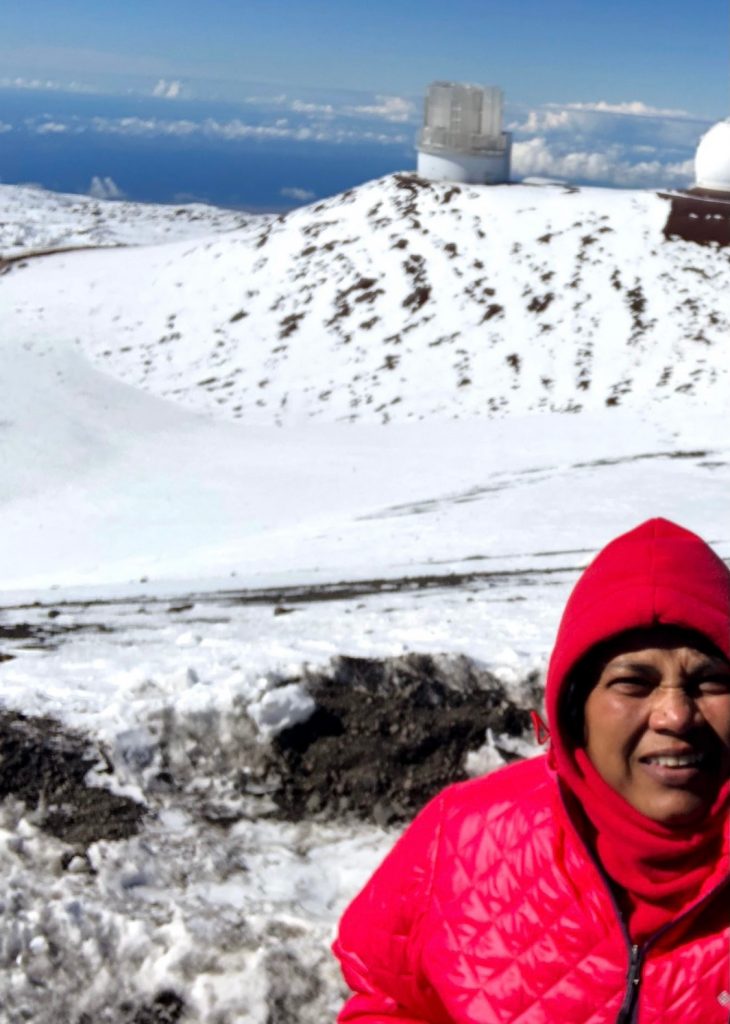
Next, you need to rent a proper 4-wheel drive with a low range option; this is different from the all-wheel drive that most of the SUVs are. This is strongly advised by the visitor center. However, we saw many two-wheel drive sedans accompanying us on our visit. If your car is a rental, it would be a good idea to check the fine print in the policy for what you will be liable for if you take it to the Maunakea summit and run into trouble on the way down. Maunakea is the only mountain in the world where you can drive from sea level to 13,800 feet in just two hours! The mountain is sacred to Hawaiians so make sure you respect their land when you are there.
On your way to Maunakea, the Visitor Information Station is a good point to stop and adjust to the change in altitude and temperature. At a height of 9,200 feet, it is also a good place to watch the stars come out as the sun sets. Also, you can easily drive up to here even if your vehicle is not a 4-wheel drive.
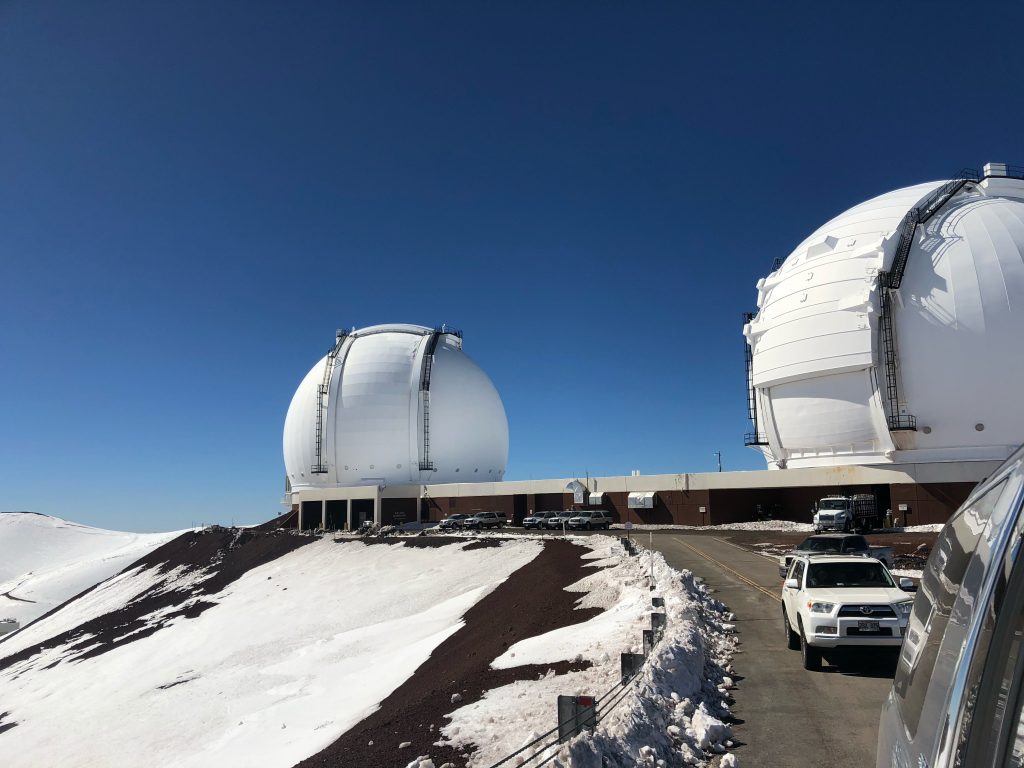
After you pass the Maunakea Visitor Information Station, the road is unpaved for five miles. But the last three-and-a-half miles are paved. Near the Visitor Information Station, the scene is calm and pastoral. A few small huts, with thatched roofs and the sides built with rough wooden planks, dot the mountainside. Cows, their coats a light milk chocolate brown, move around in herds. They seem unbothered by the wind and cold conditions. There are some grass and alpine shrubs until about 9,800 feet, as well as the mamane trees under which there is some vegetation as the trees provide fog drip, an important source of moisture in the dry environment.
On the summit, you can move around and look at the installed telescopes. Only the Keck telescope has a visitors’ gallery where you can get a glimpse through the actual window of the telescope. Because it is temperature-controlled, inside the gallery is colder than outside.
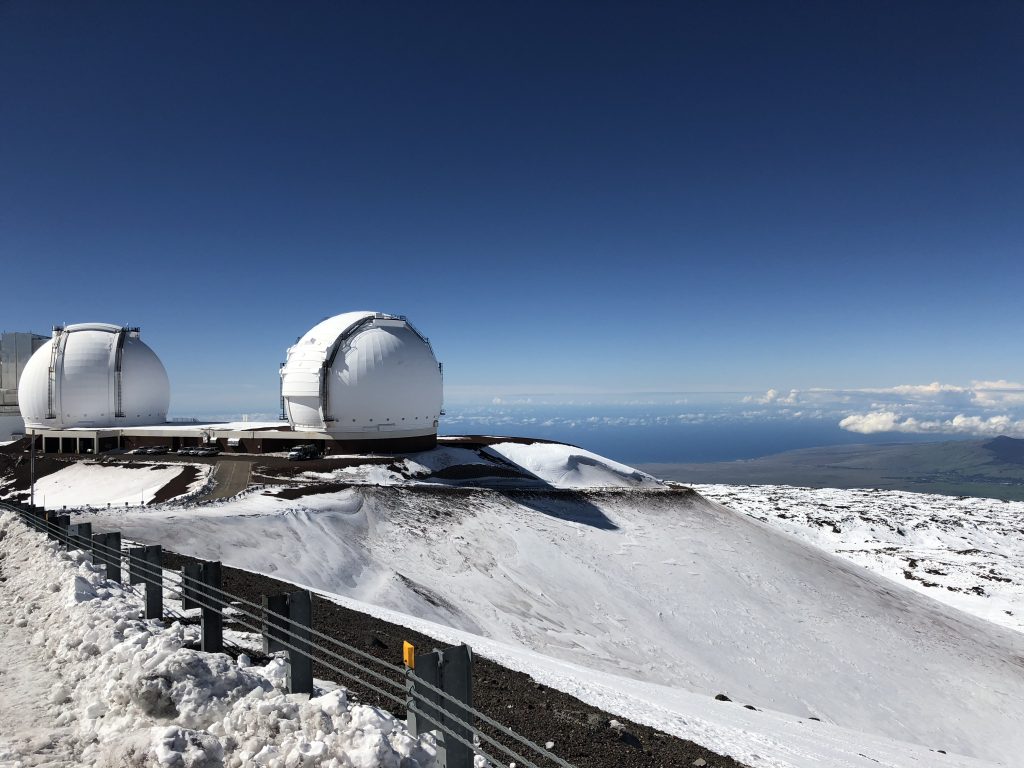
The view from the top of Maunakea is amazing. There are layers of clouds and it feels like you are on top of them and the world. When we were there it was a brilliant afternoon in December and there was snow on the mountain, but the walking paths were clear. The mountain gets its name from the snow, a little bit of which covers the summit year-round. There were hardly any clouds and I could see all the way down to the Pacific Ocean below. The sun bounced off the snow on the ground and was blinding without protective sunglasses. I didn’t carry sunglasses thinking, “I’m not going to the beach…”
On clear days, sunsets are gorgeous at the summit. But visitors have to leave within 30 minutes after sunset so that their vehicle lights do not interfere with the telescopes collecting their data.
Maunaloa, the long mountain, and one of the five volcanoes that form the island of Hawaii, is visible from one side. It is an active volcano but has not erupted in over 35 years.
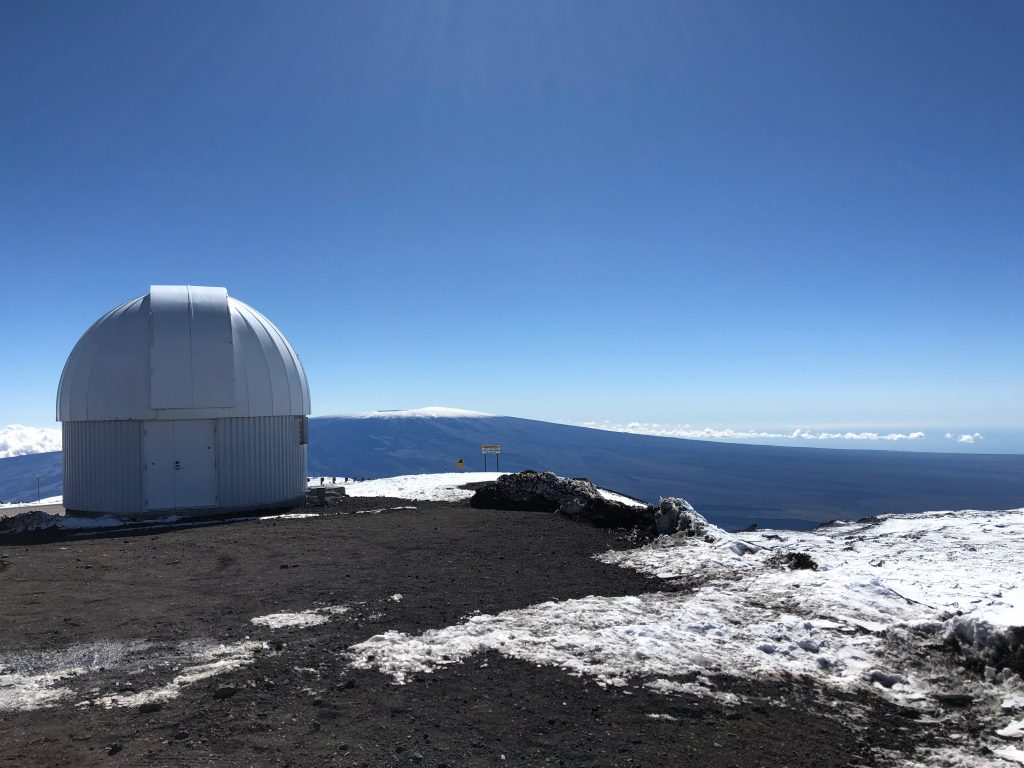
One of Maunakea’s cinder cones is home to Lake Waiau. It is the only alpine lake in Hawaii. Alpine lakes are high altitude lakes starting at elevations over 10,000 feet.
Going uphill to Maunakea was relatively easy but while coming down you must be careful. At the Visitor Information Station, there were many signs cautioning drivers not to use their brakes too much on the descent to avoid overheating and instead drive in a low gear. Here a four-wheel drive is useful because the torque is provided to all four wheels at the same time, which helps with traction.
If you want to avoid all these hassles there are tour operators who provide you with parkas and other necessary gear and take you to the summit and back. But our family enjoyed the outing as we could do things at our own pace and the years of planning paid off.
There are many fun things to discover on the Big Island, but going to Maunakea’s summit is exceptional. Where else in the world can you go from sea level to the top of a 13,800-foot cone of an old volcano and be back on the beach five hours later, enjoying shaved ice cones?
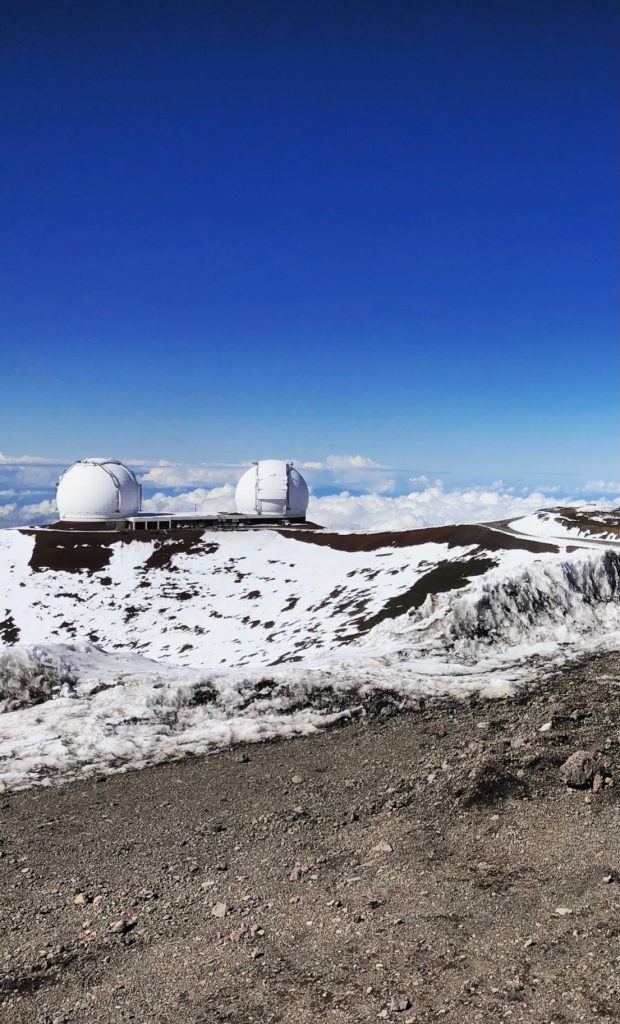
Recommended Safety Guidelines from the Visitor Information Service:
- Stop at the Visitor Information Station at 9,200 feet, to get acclimated. It is a good idea to spend at least 30 minutes here. The center has a short video about the origin and legends of Maunakea. The store sells coffee and some food and nice Maunakea merchandise.
- Check road conditions to the summit by visiting the VIS online or call 808-935-6268.
- Make sure your vehicle is a true 4-wheel drive with low range to reduce brake failure and overheating.
- Do NOT go to the summit within 24 hours of going for a scuba dive
- Pregnant women, people with heart or respiratory problems and children under 13 years should not go further than the visitor center.
- The summit opens one-half hour before sunrise and closes one-half hour after sunset.
- Currently, the Visitor Information Station is closed due to COVID-19, but the outside restrooms and the parking lot are open.

Book Your Stay near Maunakea
Search, compare and book hotels & rentals at the best prices that are sourced from a variety of platforms including Booking.com, Hotels.com, Expedia, Vrbo, and more. You can move the map to search for accommodations in other areas and also locate interesting points of interest!

Manali Shah is a freelance writer who is always dreaming of her next trip. Traveling, watching Bollywood movies and reading murder mysteries are her favorite pastimes.
She lives in Minnesota and has been actively volunteering on several school district committees and other organizations in her city since 2004. Manali is a Board member of Woodbury Days–a three-day Fun Fair held in August every year–where she leads the event’s fundraising efforts and participants in it’s year-round planning.
Manali was a correspondent for Business India magazine and The Economic Times in Mumbai, India, from 1989 to 1994. She continued as a freelance business writer for some years when she moved to the USA, and now writes travel memoirs.